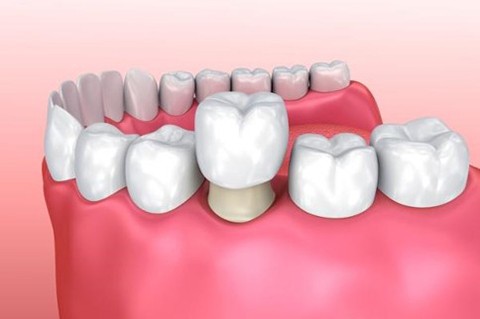In PLV (mechanical ventilation), oxygen - carrying fluids - is dripped through the lungs into the lungs of the patient. In this article I will describe how PL V is used today and how patients who receive it can be cared for. The currently preferred liquids are liquids with oxygen and carbon dioxide bearing properties (e.g. liquid oxygen, liquid carbon monoxide). Perflubron helps to open collapsed alveoli, increase gas exchange and improve lung conformity so that the ventilator can operate at the same level it reaches. This improved conformity allows ventilation with increased tidal volume, resulting in increased gas exchange and PFC fluids in the lungs, which can contribute to improved ventilation and mismatch of the perfusion. ...

Prostheses are specialised dentists who are
trained in this area by academic institutions. Fixed prosthetics is a
field of prostodontics that focuses on permanently attached (fixed)
dentures. These include fixed dentures (also referred to as indirect
restoration) and dental implants (e.g. prosthetic teeth).
A 28-year-old patient reported her first
experience with fixed prostheses in a local hospital. A thorough
clinical examination was carried out to formulate a suitable treatment
plan, and then a fixed partial denture was produced. The dental history
showed that the tooth had been lost due to trauma 4 years ago.
The physiological reconstruction of a
weakened patient requires sufficient implant support to stabilize the
implant - supported prosthesis. In order to facilitate the prosthetic
rehabilitation of such patients, Branemark has introduced extensive
onlay bone transplants, which are used in conjunction with bilateral
sinus inlays. The placement of two such implants (zygomas) can be
performed in an office environment and allows the implants to support
fixed dentures and bone grafts. So-called "Branemark horseshoe gags"
require only a few hours of work and at least 3-5 days of recovery time.
The implant was originally developed
more than a century ago by a Swedish scientist named Per Ingvar
Branemark. It was originally developed out of the need for patients to
attach loose, perfectly fitting prostheses. If the patient is generally
healthy and has a healthy gum and a sufficient jawbone to support an
implant, prostheses recommend implant treatment as a suitable option to
replace missing teeth. However, many factors have to be considered
before an implant treatment is performed on a patient with a fully
toothless maxilla.
Technical improvements to the implant
have enabled dentists to extend its usefulness to replace missing or
lost teeth and repair teeth in other parts of the body.
This is a highly effective treatment
option that allows Dr. Lebovics to place a tooth that reflects the shape
and size of the natural tooth. In situations where the edges cannot be
positioned to provide the same space as a normal tooth, the affected
tooth or teeth must undergo a crown extension.
There are a number of different types of
edges that can be placed during the restoration of the crown, as well
as a variety of other options for repair.
The shoulder inclinations are used to
effectively reduce the tooth restoration distance during the final
cementation of the restoration. When using shoulder preparations,
dentists are strongly encouraged to add these teeth, but there are other
options such as chamfer, which are popular for complete gold
restoration and effectively remove a small amount of tooth structure. In
general, the main advantage of stationary prosthetics compared to
direct restoration is the possibility of using larger restorations and
creating an aesthetically pleasing tooth.
In dental restoration, the principles
for determining the appropriate restoration refer to the materials used
and the relationship between the adjacent teeth. Various materials such
as gold, silver and other metals are used in the production of the
dental crown. Compared to healthy natural dental structures, these
restorations exhibit impaired structural and functional integrity due to
the removal of teeth and loss of bone.
This is often referred to as "fixed,"
which means that it is installed after the patient has removed a natural
tooth connected to an artificial root.
If the outer surface of the tooth has
been damaged by caries or other trauma during repair, this tooth can be
reconstructed and strengthened with the help of dental capsules. In the
case of a dental bridge, an adjacent tooth (referred to as abutment)
must be used as a support. This is filed down to create an anchorage
crown that is attached to the capsule that is installed on top of it.
As soon as the dentist and the patient
are satisfied with the fit and appearance of the prosthesis, it is
cemented with a solid cement which is determined by the dentists. After
isolating the product, the dentist must mix the durable cements
according to the manufacturer's instructions and then cover the inside
of both the abutment tooth and the denture with sufficient cement to
ensure sufficient adhesion between it and the patient's teeth. The
prepared tooth or teeth should be examined and all remaining temporary
cement removed, and once the dentist or patient is convinced that they
are suitable for the appearance, they can be implanted.
In preparation, the dentist inserts the
denture and the patient is instructed to bite continuously until the
cement has cured. The dentist and the patient sit in the same position
and both sit in their prostheses in preparation for implantation.
It takes time for the new dental implant
to bond with the bone in which it was placed in the jaw in a process
called osseointegration. Makeshift bridges, including artificial acrylic
teeth, can be repaired using many similar techniques used for permanent
dentures. Makeshift bridges can also be built using the same technology
as permanent bridges, so that the permanent bridge can not only be used
as a makeshift bridge, but also as a makeshift bridge.
Comments
Post a Comment